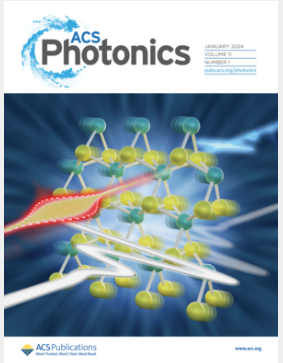基于锗酸铋的切伦科夫飞行时间正电子发射层析成像探测器分段SiPM读出
IF 6.7
1区 物理与天体物理
Q1 MATERIALS SCIENCE, MULTIDISCIPLINARY
引用次数: 0
摘要
正电子发射断层扫描(PET)是最灵敏的生物医学成像方式,用于无创检测和可视化受试者体内的正电子发射放射性药物。在PET中,测量每对511kev湮灭光子的飞行时间(TOF)信息可以提高有效灵敏度,但需要较高的时间分辨率。同时发射闪烁和切伦科夫光子的混合材料,如锗酸铋,最近提供了从切伦科夫光子获得更精确定时信息的潜力,同时保持了从闪烁光子获得足够的能量分辨率。然而,将这种混合材料用于TOF PET应用的一个重大挑战在于,由于切伦科夫光子的产量相对较低,切伦科夫光子和闪烁光子的混合探测导致了事件依赖的时间扩展。这项研究引入了一种创新的方法,通过将硅光电倍增管(SiPM)像素分割到单晶上,而不是使用与它们读取的晶体一样大或更大的传统SiPM。我们证明了从分段SiPM获得的多个时间戳和光子计数可以通过提供时间光子密度来对事件进行分类,有效地解决了这一挑战。该方法和发现将为需要精确定时和光子计数的应用带来新的机会。本文章由计算机程序翻译,如有差异,请以英文原文为准。

Segmented SiPM Readout for Cherenkov Time-of-Flight Positron Emission Tomography Detectors Based on Bismuth Germanate
Positron emission tomography (PET) is the most sensitive biomedical imaging modality for noninvasively detecting and visualizing positron-emitting radiopharmaceuticals within a subject. In PET, measuring the time-of-flight (TOF) information for each pair of 511 keV annihilation photons improves effective sensitivity but requires high timing resolution. Hybrid materials that emit both scintillation and Cherenkov photons, such as bismuth germanate, recently offer the potential for more precise timing information from Cherenkov photons while maintaining adequate energy resolution from scintillation photons. However, a significant challenge in using such hybrid materials for TOF PET applications lies in the event-dependent timing spread caused by the mixed detection of Cherenkov and scintillation photons due to relatively lower production of Cherenkov photons. This study introduces an innovative approach by segmenting silicon photomultiplier (SiPM) pixels coupled to a single crystal, rather than using traditional SiPMs that are as large as or larger than the crystals they read. We demonstrated that multiple timestamps and photon counts obtained from the segmented SiPM can classify events by providing temporal photon density, effectively addressing this challenge. The approach and findings would lead to new opportunities in applications that require precise timing and photon counting.
求助全文
通过发布文献求助,成功后即可免费获取论文全文。
去求助
来源期刊

ACS Photonics
NANOSCIENCE & NANOTECHNOLOGY-MATERIALS SCIENCE, MULTIDISCIPLINARY
CiteScore
11.90
自引率
5.70%
发文量
438
审稿时长
2.3 months
期刊介绍:
Published as soon as accepted and summarized in monthly issues, ACS Photonics will publish Research Articles, Letters, Perspectives, and Reviews, to encompass the full scope of published research in this field.
 求助内容:
求助内容: 应助结果提醒方式:
应助结果提醒方式:


